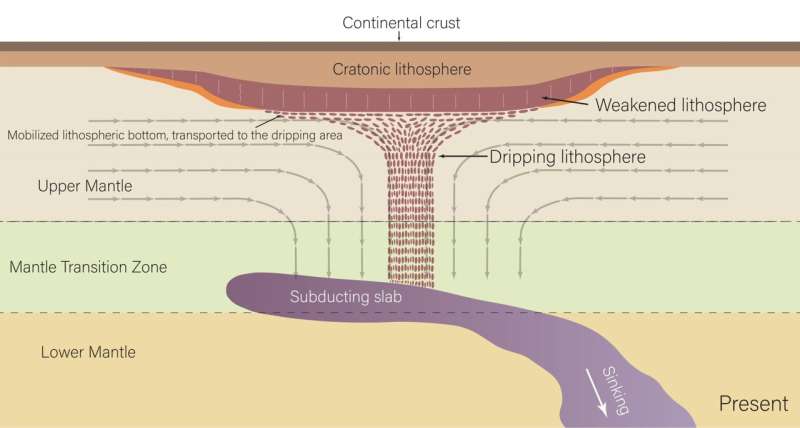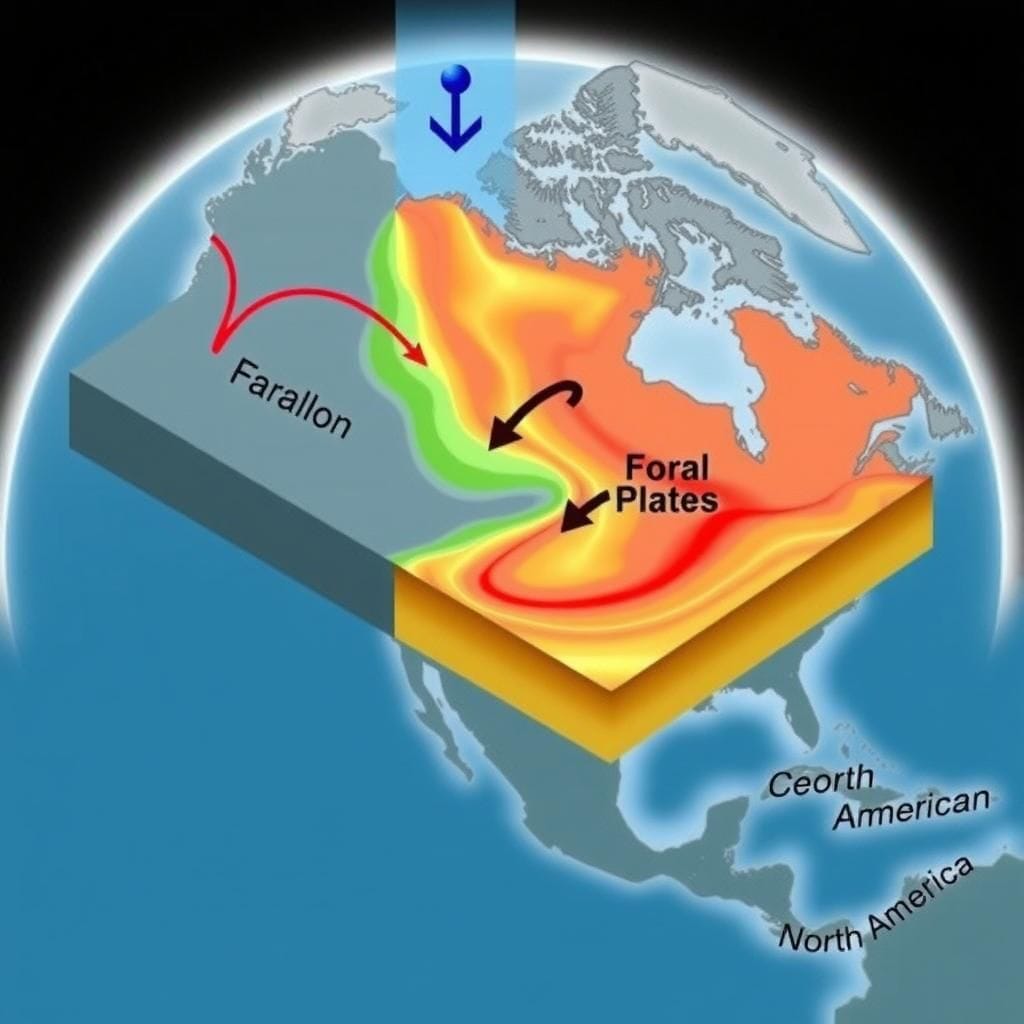
A groundbreaking discovery by researchers has unveiled that the underside of the North American continent is experiencing a dripping phenomenon, wherein blobs of rock are detaching and sinking into the Earth’s mantle. The underlying cause is believed to be the remnants of a subducted tectonic plate influencing this process.
A study published in Nature Geoscience details this unprecedented observation, which was conducted at The University of Texas at Austin. This marks the first time that cratonic thinning—a phenomenon involving the gradual depletion of craton layers—has been captured in action.
“We identified indications that something unusual was occurring beneath the craton,” explained Junlin Hua, the study’s lead author, who conducted the research during his postdoctoral fellowship at UT’s Jackson School of Geosciences. “Fortunately, we were also able to formulate a new hypothesis regarding the mechanism driving this thinning.”
Understanding Cratons and Their Stability
Cratons represent the oldest and most stable portions of Earth’s continental crust, often persisting for billions of years. Despite their resilience, they occasionally undergo transformations that can influence their structural stability or even result in the loss of entire rock layers.
For instance, the North China Craton experienced the disappearance of its deepest root layer several million years ago.
What makes the present discovery particularly noteworthy, according to researchers, is that this cratonic dripping is currently in progress. This provides a unique opportunity for scientists to monitor the thinning process in real time.
Geographical and Geological Implications
This rock dripping is predominantly occurring beneath the Midwestern United States. However, researchers assure that there is no imminent risk of significant geological transformations or large-scale continental destabilization. The mantle-driven mechanisms responsible for this process evolve at an exceptionally slow pace. Eventually, the dripping effect is expected to subside as the subducted plate continues descending deeper into the mantle, diminishing its influence over the craton.
The findings hold substantial significance for geoscientists studying continental evolution over vast timescales, emphasized Thorsten Becker, a co-author of the study and a professor at the Jackson School’s Department of Earth and Planetary Sciences and Institute for Geophysics.
“This type of phenomenon is crucial for understanding how planetary landmasses have evolved,” Becker stated. “It provides insights into the formation, fragmentation, and eventual recycling of continents within Earth’s geodynamic system.”
Advanced Seismic Modeling Reveals the Dripping Phenomenon
The discovery emerged from an extensive research initiative spearheaded by Hua, now a professor at the University of Science and Technology of China. The project involved constructing an advanced full-waveform seismic tomographic model of North America, employing a method pioneered by co-author Stephen Grand, now a professor emeritus at the Jackson School.
By leveraging seismic data from the EarthScope project, the model offered an unprecedented view into the geological processes occurring within the continental crust and underlying mantle.
“The adoption of this full-waveform approach has significantly improved our understanding of the critical boundary region between the deep mantle and the shallow lithosphere, where vital clues about lithospheric interactions can be found,” Becker elaborated.
This model played a pivotal role in detecting the dripping phenomenon and also led researchers to propose that the Farallon Plate—a long-subducted oceanic plate beneath North America for the past 200 million years—is actively driving this process.
Role of the Farallon Plate in Cratonic Thinning

First seismically imaged in the 1990s by Grand, the Farallon Plate has historically exerted significant influence on the North American Plate’s geological evolution. Researchers now propose that it may be eroding the continent’s underlying structure through two primary mechanisms:
- Altering mantle material flow, leading to shearing at the craton’s base.
- Releasing volatile compounds, which progressively weaken the craton’s foundation.
Although dripping activity is primarily localized, Hua noted that interactions with the Farallon Plate appear to extend across the entire cratonic region, which encompasses a vast portion of both the United States and Canada.
“A substantial area is undergoing a degree of thinning,” Hua observed.
Computer Models Validate the Dripping Hypothesis
To further test their hypothesis, researchers developed computer models simulating these geodynamic interactions. When the Farallon Plate was included in the simulations, cratonic dripping occurred. Conversely, when the plate was removed, the dripping ceased.
While computer models have inherent limitations, Becker emphasized that their alignment with seismic data suggests that the observed dripping effect is a real and ongoing geological process.
“When analyzing models, we must always ask, ‘Are we observing a genuine phenomenon, or are we over-interpreting the data?’” Becker stated. “However, the fact that these blobs appear and disappear in multiple locations suggests that this is indeed an authentic geological occurrence rather than a computational anomaly.”
